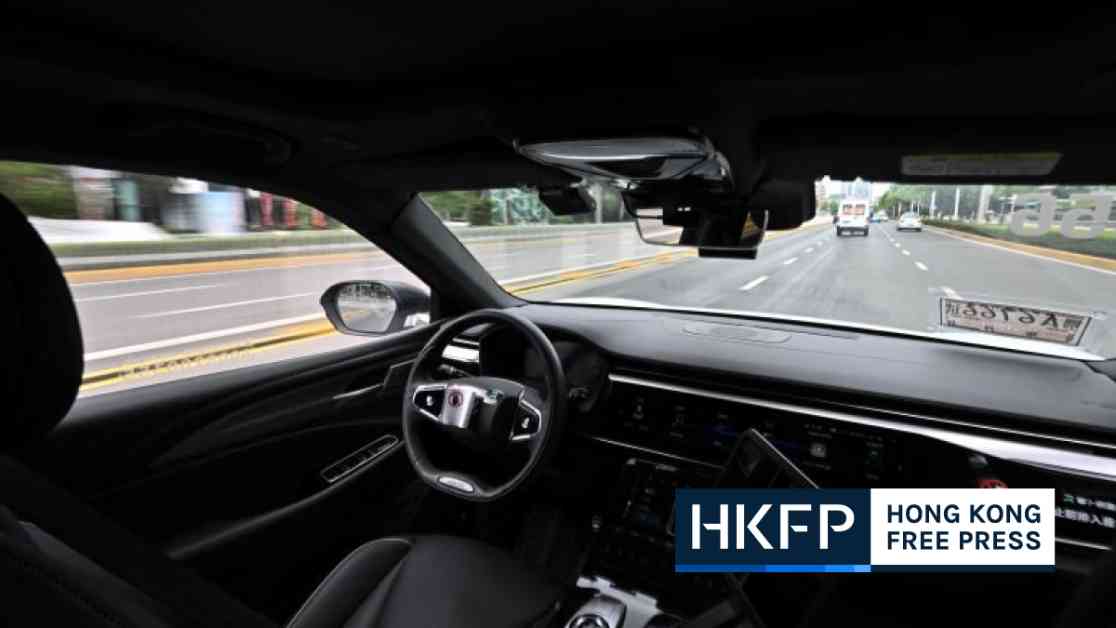The Rise of China’s Robotaxi Fleet: Implications and Excitement
As driverless taxis make their way through Chinese cities, both wariness and wonder surround the rise of these autonomous vehicles. With billions of dollars invested in self-driving technology by China’s tech companies and automakers, the country is striving to catch up with industry leaders in the United States. Wuhan, a central city in China, now boasts one of the world’s largest networks of self-driving cars, with over 500 robotaxis that can be hailed through a mobile app like regular rides. The sight of these driverless taxis cruising through the streets has left locals in awe, with one resident describing the experience as “magical, like a scene from a sci-fi movie.”
Implications of the Robotaxi Fleet
While the expansion of self-driving technology in China has sparked excitement, it has also raised concerns about safety and the potential impact on traditional taxi drivers and ride-hailing companies. A fatal accident involving a Huawei-backed Aito car in April, where the automatic braking system failed, reignited the debate around the safety of autonomous vehicles. Additionally, a minor collision between a jaywalker and a Wuhan robotaxi further fueled concerns about the readiness of self-driving technology for widespread use.
The fear of being replaced by artificial intelligence has been voiced by taxi drivers and workers in traditional ride-hailing companies, who worry about losing their livelihoods to robotaxis. Deng Haibing, a Wuhan taxi driver, expressed his concerns, stating that the robotaxi companies could push traditional drivers out of business with subsidized fares, only to raise prices once they dominate the market. The impact of robotaxis on traditional drivers is still limited, as self-driving technology is not yet fully developed and cannot operate in all areas.
Wuhan’s Apollo Go Project
Wuhan’s driverless taxi fleet is part of Baidu’s Apollo Go project, which received licenses to operate in the city in 2022. Initially, only five robotaxis were serving passengers in a limited area of the city, but they have since expanded to cover a significant portion of Wuhan, including a small part of the city center. Baidu’s robotaxis operate in a 3,000 square kilometer patch, showcasing the rapid growth of self-driving technology in China. In comparison, US leader Waymo covers a smaller area of 816 square kilometers in Arizona.
When riders book a robotaxi, they can unlock the vehicle by scanning a QR code with their phones, with the front seats blocked off for safety reasons. The fares for robotaxis are currently discounted, offering a competitive alternative to traditional taxis. Despite the convenience and affordability of robotaxis, some concerns persist about the impact on job security for traditional drivers and the readiness of self-driving technology for widespread deployment.
Challenges and Future Prospects
While more Chinese cities are implementing policies to promote self-driving services, there is still a long way to go before autonomous vehicles become ubiquitous. Technology policy analyst Tom Nunlist emphasizes that fully autonomous driving technology is not yet ready for large-scale deployment. Safety measures, such as human officers monitoring rides remotely, are still necessary to ensure the safety of passengers in robotaxis. Additionally, the human touch provided by traditional drivers cannot be replicated by driverless cars, particularly in scenarios involving passengers with disabilities or large items.
The Future of Autonomous Vehicles in China
Despite the challenges and concerns surrounding the rise of robotaxis in China, the enthusiasm for self-driving technology remains high. With ongoing pilot projects in cities like Shanghai, Beijing, Chongqing, and Shenzhen, the country is at the forefront of autonomous vehicle development. As technology continues to evolve, the debate around safety, job displacement, and the readiness of self-driving technology will shape the future of transportation in China.
In Conclusion
The rise of China’s robotaxi fleet signifies a significant shift in the transportation industry, with autonomous vehicles becoming increasingly prevalent in Chinese cities. While the development of self-driving technology has sparked excitement and innovation, it has also raised important questions about safety, job security, and the readiness of autonomous vehicles for widespread use. As China continues to invest in self-driving technology and expand its network of robotaxis, the implications and challenges of this transformative technology will shape the future of transportation in the country.



















